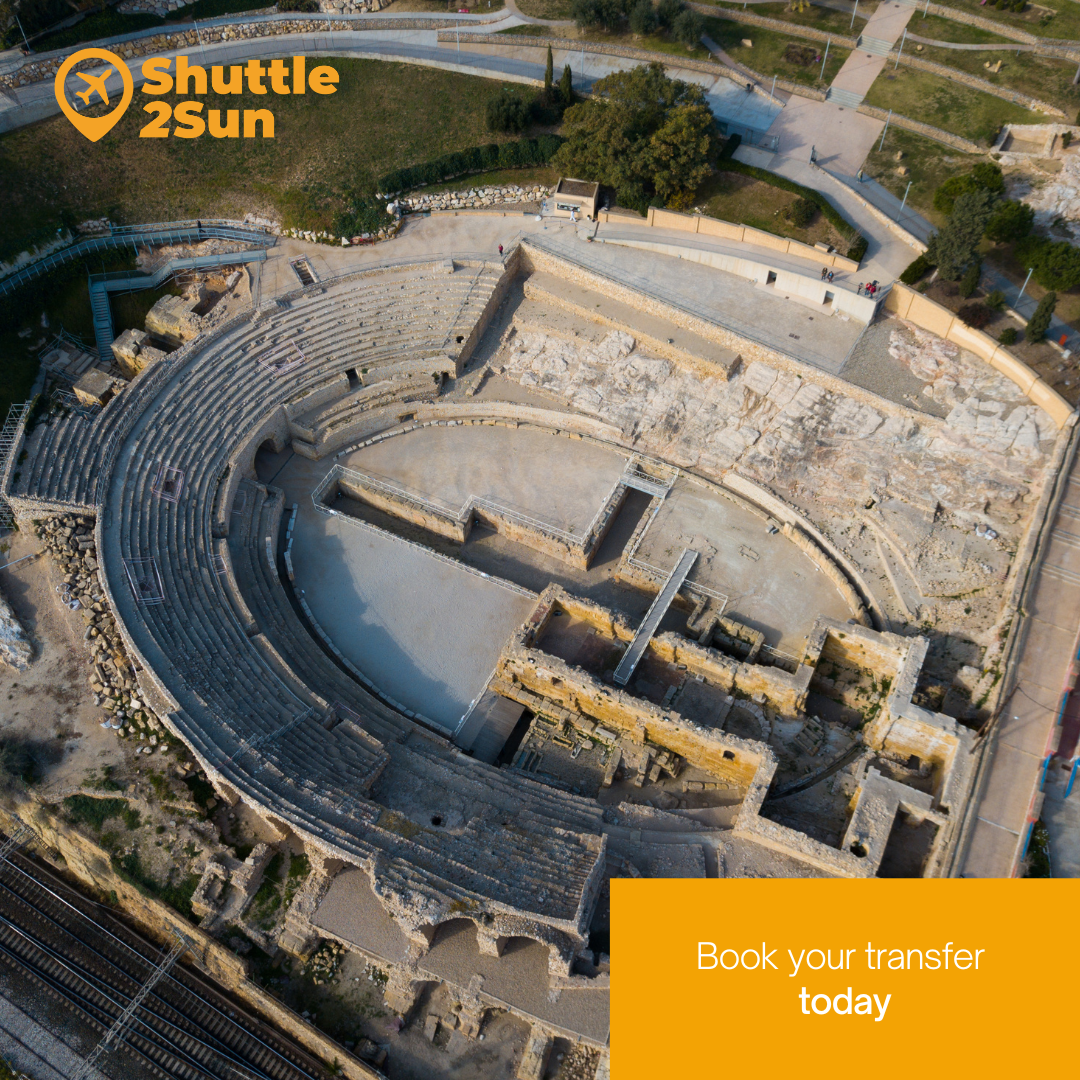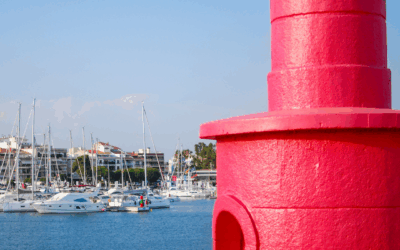Tarragona’s Amphitheatre transports you back two millennia to a history full of secrets and fascinating facts. Uniquely located right on the Mediterranean coast, this iconic site was the heart of ancient Tarraco, the capital of Hispania Citerior.
In this arena, the cries of thousands of spectators mingled with the clash of gladiators’ swords and the roar of wild beasts, a monumental reminder of the grandeur and, often, the brutality of the Roman Empire. Walking through its stands allows you to feel the tangible weight of a history that defined Western civilisation.
For travellers who want to uncover these mysteries and immerse themselves completely in the complex life of the Amphitheatre, the first step is to book a comfortable and fast transfer from Barcelona Airport to Tarragona. With Shuttle2Sun‘s low-cost and sustainable shared transfer services and private transfer services, you can travel to your favourite destination from Barcelona Airport, Barcelona Port, Reus Airport, Girona Airport and Camp de Tarragona AVE train station.
A strategic design
The Tarraco Amphitheatre was not built at random; its location is a masterpiece of Roman engineering, designed to maximise spectacle and logistics alike. First, a natural hill overlooking the Mediterranean was chosen, allowing Roman builders to take advantage of the land’s slope for the stands’ foundations (cavea), saving significant costs and construction time.
This elevated position also guaranteed proximity to the sea. This proximity was essential for the logistics of the games: the wild animals needed for the venationes (hunts) and the stage materials could be unloaded from the ships directly at the nearby Platja del Miracle and transported relatively easily to the venue.
Beneath the arena, the Amphitheatre concealed a complex world: the underground pits (fossae). Using hoists operated by a system of pulleys and counterweights, cages containing wild animals, gladiators or complex scenery could be raised directly from the subsoil to the centre of the arena. This logistical ingenuity ensured the surprise factor and the grandeur of the games.
A venue for 14,000 spectators
The sheer scale of the Tarragona Amphitheatre is evident when considering its capacity: this colossus could accommodate nearly 14,000 spectators.

This figure not only demonstrates the importance of Tarraco within the Roman Empire, but also the appetite for spectacle of its inhabitants.
The stone seats were arranged in three tiers (maeniana) that reflected the social hierarchy of the city. This massive gathering of citizens and visitors came together to witness the controlled brutality of gladiatorial combat (munera) and the popular hunts of exotic animals (venationes).
Discover all these secrets and curiosities of the Tarragona Amphitheatre first-hand! Shuttle2Sun takes you to ancient Tarraco with its low-cost and sustainable shared transfer services and private transfer services from Barcelona Airport, Barcelona Port, Reus Airport, Girona Airport and Camp de Tarragona AVE train station.
The evolution of the Tarragona Amphitheatre
Initially, the space was the main stage for Roman public life. Although it is mainly known for gladiatorial combats and hunts, it is likely that it also occasionally hosted theatrical performances or even simulated naval battles (naumaquias). Its function changed dramatically in 259 AD, when it became the site of the martyrdom of three Tarragona saints: Bishop Saint Fructuosus and his deacons, Saint Augurius and Saint Eulogius, who were burned alive.

This event marked the transition of the amphitheatre. In the 5th century, in commemoration of the martyrdom, a three-nave Christian basilica was built directly on the arena. A cemetery was established around this temple, with tombs dug into the sand and mausoleums attached to the church itself.
Later, in the 12th century, the Romanesque church of Santa Maria del Miracle was built on the remains of the basilica, maintaining the religious tradition of the enclave. This church was, in turn, ceded to the Order of the Holy Trinity in the 16th century, becoming a convent and maintaining the site’s spiritual use for centuries.
Its sacred function ended in the 19th century, when the complex was confiscated and briefly used as a prison and barracks, before falling into disrepair and demolition. It was finally with the arrival of excavation and restoration campaigns that the space was recovered as the archaeological monument we know today, revealing the multiple layers of its history.
The largest Roman inscription in the world
One of the most impressive secrets of the Amphitheatre is not in its structure, but in its message. Surrounding the entire podium that separated the arena from the stands was a monumental inscription with a historical record: at 147 metres long, it is considered the largest inscription in the Roman world ever documented.
This gigantic text, carved in stone, commemorated the important reforms carried out in the Amphitheatre during the reign of Emperor Heliogabalus (early 3rd century AD).
Nemesis: the goddess protector of the arena
Before the gladiators and participants in the hunts entered the arena, they entrusted themselves to a key deity: Nemesis, known in the Roman world as the goddess of divine vengeance and the protector of justice and destiny. In the Amphitheatre, there was a mural dedicated to Nemesis where these rites were performed. This piece is currently preserved in the National Archaeological Museum of Tarragona (MNAT).
Explore the historical foundations of the Amphitheatre of ancient Tarraco for yourself! Book your transfer now with Shuttle2Sun, which offers low-cost and sustainable shared transfer services and private transfer services to take you to Tarragona from Barcelona Airport, Barcelona Port, Reus Airport, Girona Airport and Camp de Tarragona AVE train station.



